Our Low FODMAP Coconut Lime Bread will make it into your regular rotation of quick breads – we are betting on it. Everyone knows banana bread (and we have a few of those) but this one features coconut milk, coconut oil and grated dried coconut along with tangy lime juice and zest. Triple the coconut and double the lime in a very tender-crumbed loaf with a fancy looking, but simple, glaze and topping.
What Is A Quick Bread?
Quick breads live up to their name – they are quick! The batter for this coconut lime bread can be made while the oven preheats.
Quick breads depend on chemical leaveners, such as baking powder and baking soda; no yeast involved. The technique is as simple as combining wet and dry mixtures. You don’t even need a mixer.
Quick breads are great recipes for beginner bakers. Check out our:
- Lower Fat, Reduced Sugar Banana Bread
- Nana’s Banana Bread
- Irish Soda Bread
- Strawberry Bread
- Poppy Seed Carrot Banana Bread
- Chocolate Coconut Banana Bread
- Cranberry Orange Bread
- Zucchini Bread
- Lemon Zucchini Bread
- Zucchini Banana Bread
- Beer Bread
What Is Unrefined Coconut Oil?
This recipe for Low FODMAP Coconut Lime Bread uses coconut oil as the fat. You could use another vegetable oil, such as canola, but why give up a chance to impart more coconut flavor?
But you have you know what kind of coconut oil to buy. There is refined and unrefined. Here’s what you should tuck away as helpful info:
- Unrefined coconut oil does have a coconut flavor. We use it in recipes such as this one where we want to accentuate coconut flavor.
- Refined coconut oil does not have any coconut flavor.
- Both unrefined and refined coconut oil are low FODMAP.
- They can be used interchangeably in recipes. Simply use the same amount, but the dish’s flavor will be affected.
Let’s Talk Coconut & FODMAPs
Along with the coconut oil, which contains No FODMAPs, this recipe also calls for coconut milk and shredded coconut. Both do contain FODMAPs, but they have low FODMAP serving sizes, which are reflected in the serving sizes of this bread.
Coconut Milk
Both Monash University and FODMAP Friendly has lab tested coconut milk for FODMAPs.
Monash divides their testing into a few categories. Here are Monash’s statements:
- Coconut milk with inulin is Red Light high FODMAP at ½ cup (125 ml) or 120 g. There is no information on smaller amounts.
- UHT (long life, shelf-stable) coconut milk is Green Light low FODMAP at ¾ cup (180 g).
- Canned coconut milk is Green Light low FODMAP at ¼ cup or 60 g.
- They also have some brands represented, such as Sanitarium, and their unsweetened coconut milk, which is a shelf-stable type, is low FODMAP at 1 cup (250 g).
FODMAP Friendly gives coconut milk a “Fail” at 4-ounces (125 ml) but we do not know what kind they tested.
There are a few things to note. First of all, the FODMAP content obviously varies greatly depending on type of processing. Also, although “lite” or “light” canned coconut milk has not been tested, it is the same as canned but with a higher water content, so you can use the canned coconut milk amounts designated and know that you are within low FODMAP serving sizes.
For this recipe I like full-fat canned coconut milk for its rich flavor and texture.
Shredded Dried Coconut
Dried coconut has been lab tested by both FODMAP Friendly and Monash University. Monash states has established that the low FODMAP amount is ½ cup (30 g). FODMAP Friendly gives it a “Pass” at 4 tablespoons or 25 g.
How To Make Low FODMAP Coconut Lime Bread
The batter for this bread is easy enough as you will see. It is simply a matter of making a dry mixture and a wet and combining them together.
I like adding the lime zest to the wet mixture to help disperse those citrus oils better for maximum flavor.
Preheat oven to 350°F (180°C). Coat an 8-inch by 4-inch (20 cm by 10 cm) loaf pan with cooking spray, line with parchment paper, overhanging the two short sides, then coat the paper, too and set aside.
In a large bowl, place the flour, sugar, baking powder and salt.
Whisk together and make a well in the center.
People sometimes ask me what this means. It literally means making a depression in the center, where you will pour the wet mixture.
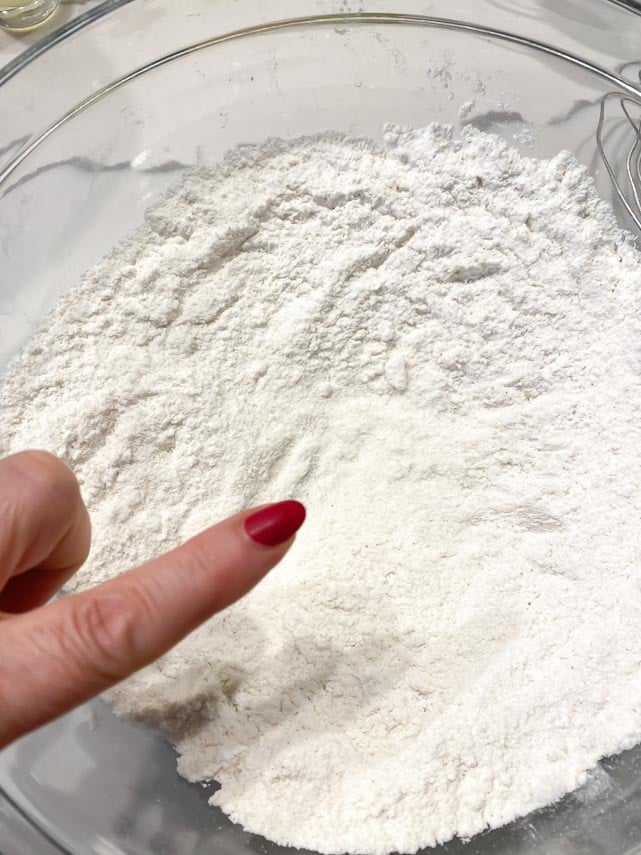
In a separate bowl place the coconut milk, coconut oil, eggs, lime zest and juice and vanilla extract.
Whisk together well, then pour into the well of the dry mixture. Stir and fold until a few floury streaks remain. Fold in ½ cup (38 g) coconut.
Pour batter into prepared pan.
Bake for 30 minutes. Sprinkle remaining 2 tablespoons of coconut over the loaf. Continue baking for about 25 to 30 minutes longer, or until bamboo skewer inserted in the center comes out clean. Place the loaf pan on a cooling rack until just warm, then use parchment paper to help unmold. Cool upright on wire rack.
For the Glaze & Topping: Whisk together confectioner’s sugar and lime juice until smooth. Fresh squeezed lime juice makes a huge difference here!
Whisk until very smooth with a flowable texture.
Drizzle the glaze over the cooled bread and while glaze is still wet, sprinkle with coconut and lime zest. Allow to sit a few minutes until topping sets. Loaf is ready to slice and serve or may be stored in an airtight container at room temperature for 3 days. I like to slice with a serrated knife.
Coconut Lover’s Unite
And since we know you are a coconut lover, be sure to read our in-depth article, Is Coconut Low FODMAP? Obviously, you know that many kinds are, but the article covers it all: coconut water, pictures of the various types of dried coconut, the various types of milks compared, etc.
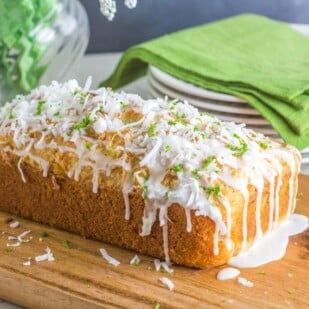
Low FODMAP Coconut Lime Bread
Our Low FODMAP Coconut Lime Bread will make it into regular rotation of quick breads – we promise. Everyone knows banana bread (and we have a few of those) but this one features coconut milk, coconut oil and grated dried coconut along with tangy lime juice and zest. Triple the coconut and double the lime in a very tender-crumbed loaf with a fancy looking, but simply, glaze and topping.
Ingredients:
Bread:
- 1 1/3 cups (194 g) low FODMAP gluten-free all-purpose flour, such as Bob’s Red Mill 1 to 1 Gluten Free Baking Flour
- 1 cup (198 g) sugar
- 1 teaspoon baking powder; use gluten-free if following a gluten-free diet
- 1/2 teaspoon salt
- 3/4 cup (180 ml) canned full-fat coconut milk, at room temperature
- 1/2 cup (120 ml) unrefined coconut oil, melted and cooled
- 2 large eggs
- 2 tablespoons very fine lime zest, made with a rasp-style zester
- 1 tablespoon freshly squeezed lime juice
- 1 teaspoon vanilla extract
- 1/2 cup (38 g) plus 2 tablespoons sweetened flaked coconut, divided
Glaze & Topping:
- 1 cup (90 g) sifted confectioner’s sugar
- 2 tablespoons freshly squeezed lime juice
- 2 tablespoons sweetened flaked coconut
- 1 tablespoon very fine lime zest, made with a rasp-style zester
Preparation:
-
For the Bread: Preheat oven to 350°F (180°C). Coat an 8 ½-inch by 4 ¼-inch (21.5 cm by 10.5 cm) loaf pan with cooking spray, line with parchment paper, overhanging the two short sides, then coat the paper, too and set aside.
-
In a large bowl, whisk together the flour, sugar, baking powder and salt; make a well in the center. In a separate bowl place the coconut milk, coconut oil, eggs, lime zest and juice and vanilla extract and whisk together well.
-
Add the wet ingredients to the dry ingredients. Stir and fold until a few floury streaks remain. Fold in ½ cup (38 g) coconut. Pour batter into prepared pan.
-
Bake for 30 minutes. Sprinkle remaining 2 tablespoons of coconut over the loaf. Continue baking for about 25 to 30 minutes longer, or until bamboo skewer inserted in the center comes out clean. Place the loaf pan on a cooling rack until just warm, then use parchment paper to help unmold. Cool upright on wire rack.
-
For the Glaze & Topping: Whisk together confectioner’s sugar and lime juice until smooth. Drizzle the glaze over the cooled bread and while glaze is still wet, sprinkle with coconut and lime zest. Allow to sit a few minutes until topping sets. Loaf is ready to slice and serve or may be stored in an airtight container at room temperature for 3 days. I like to slice with a serrated knife.
Notes:
Tips
FODMAP Information
- Our recipes are based on Monash University and FODMAP Friendly science.
Coconut Milk: Both Monash University and FODMAP Friendly has lab tested coconut milk for FODMAPs. Monash divides their testing into a few categories. Here are Monash’s statements:
• Coconut milk with inulin is Red Light high FODMAP at ½ cup (125 ml) or 120 g. There is no information on smaller amounts.
• UHT (long life, shelf-stable) coconut milk is Green Light low FODMAP at ¾ cup (180 g).
• Canned coconut milk is Green Light low FODMAP at ¼ cup or 60 g.
• They also have some brands represented, such as Sanitarium, and their unsweetened coconut milk, which is a shelf-stable type, is low FODMAP at 1 cup (250 g).
- FODMAP Friendly gives coconut milk a “Fail” at 4-ounces (125 ml) but we do not know what kind they tested.
- There are a few things to note. First of all, the FODMAP content obviously varies greatly depending on type of processing. Also, although “lite” or “light” canned coconut milk has not been tested, it is the same as canned but with a higher water content, so you can use the canned coconut milk amounts designated and know that you are within low FODMAP serving sizes.
- Dried Coconut: Dried coconut has been lab tested by both FODMAP Friendly and Monash University. Monash states has established that the low FODMAP amount is ½ cup (30 g). FODMAP Friendly gives it a “Pass” at 4 tablespoons or 25 g.
- Eggs: Eggs are high in protein and do not contain carbohydrates, according to Monash University.
- Lime Juice: Monash University has lab tested lime juice and it is low FODMAP in 1 cup (250 g) amounts (double that of lemon juice, as an interesting fact).
- Oil: All pure oils are fats and contain no carbohydrates, therefore they contain no FODMAPs.
Please always refer to the Monash University & FODMAP Friendly smartphone apps for the most up-to-date lab tested information. As always, your tolerance is what counts; please eat accordingly. The ultimate goal of the low FODMAP diet is to eat as broadly as possible, without triggering symptoms, for the healthiest microbiome.
Nutrition
All nutritional information is based on third-party calculations and should be considered estimates. Actual nutritional content will vary with brands used, measuring methods, portion sizes and more. For a more detailed explanation, please read our article Understanding The Nutrition Panel Within Our Recipes.
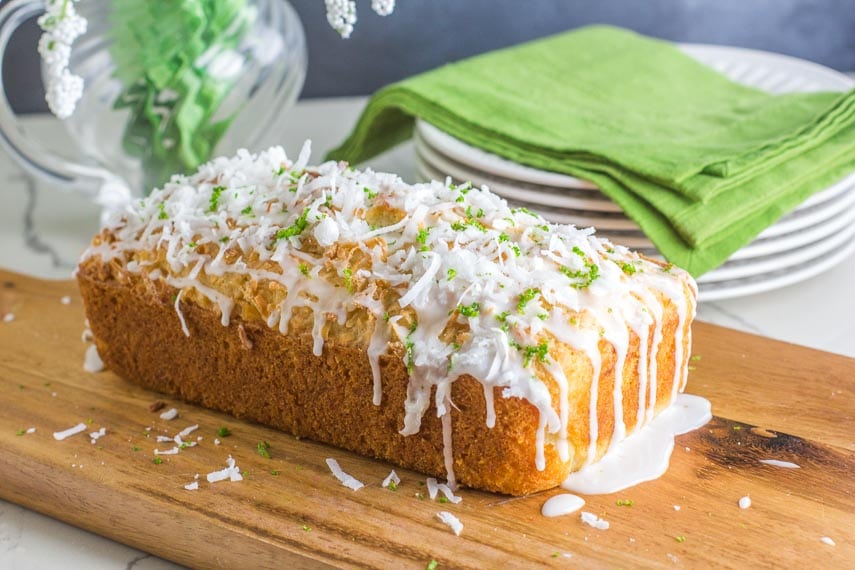
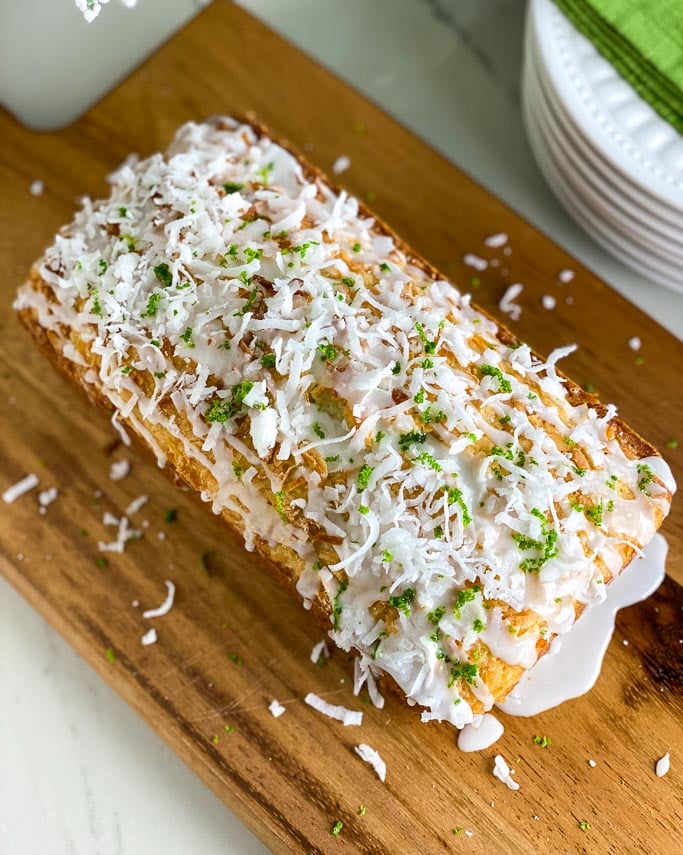
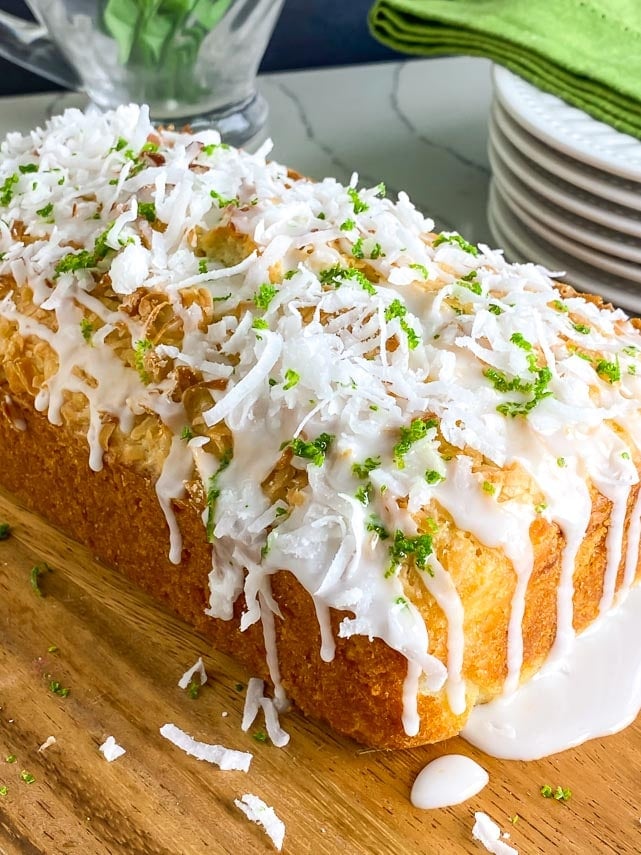
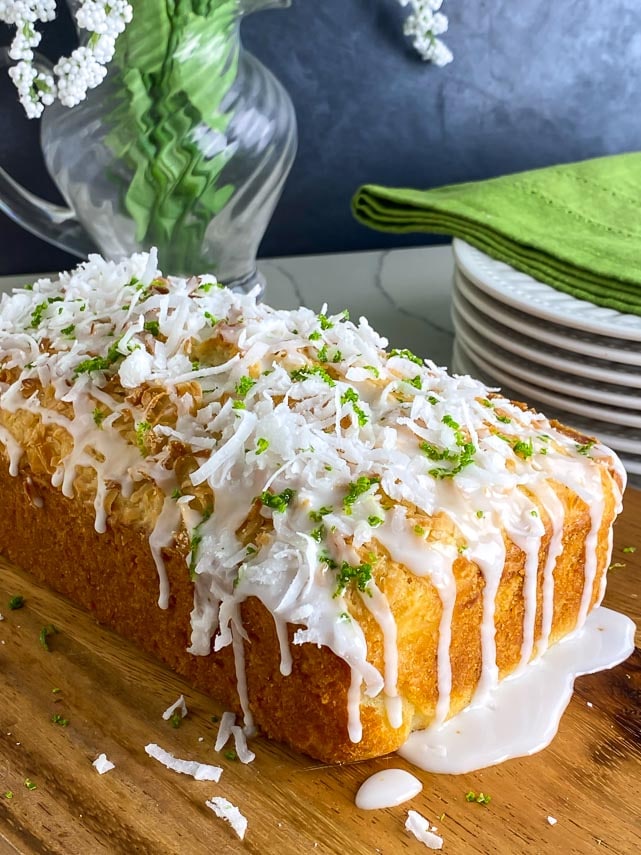
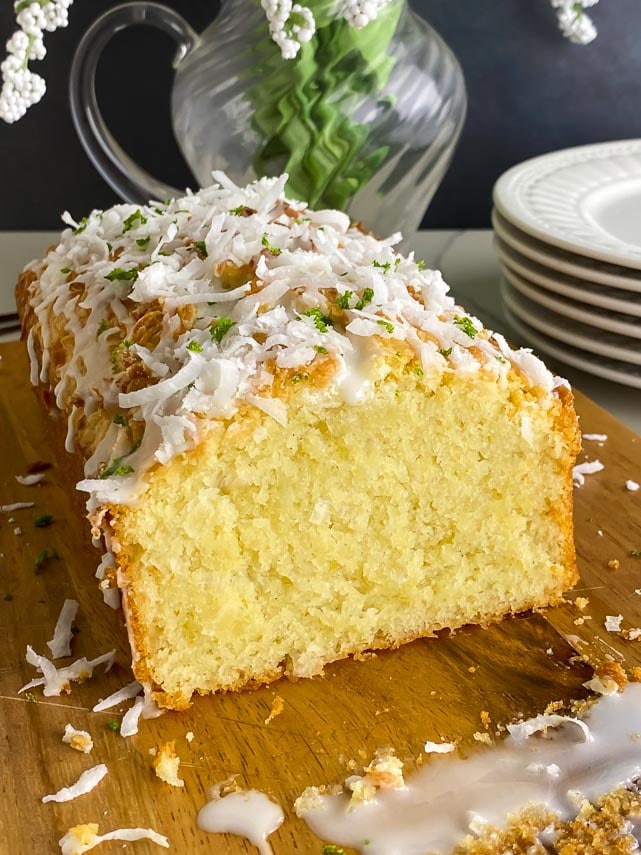
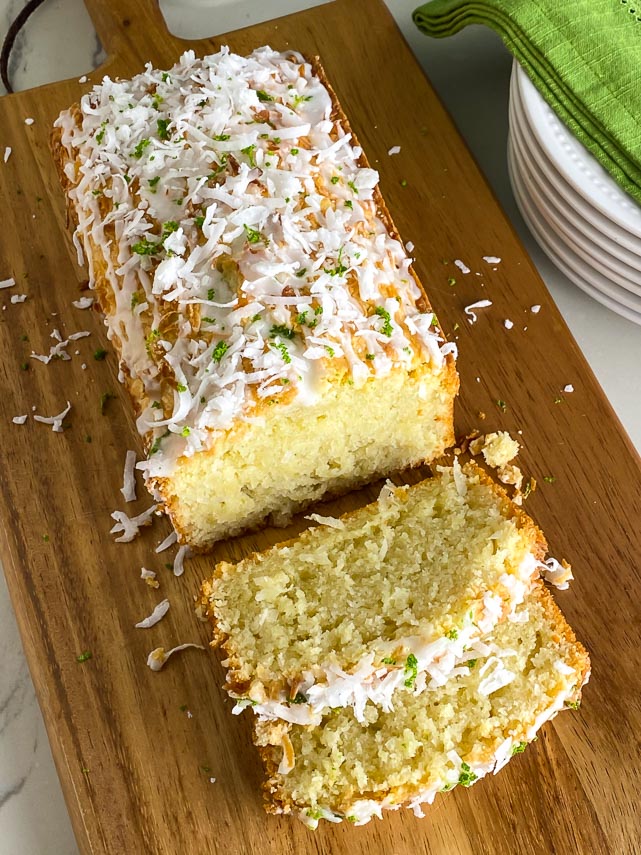
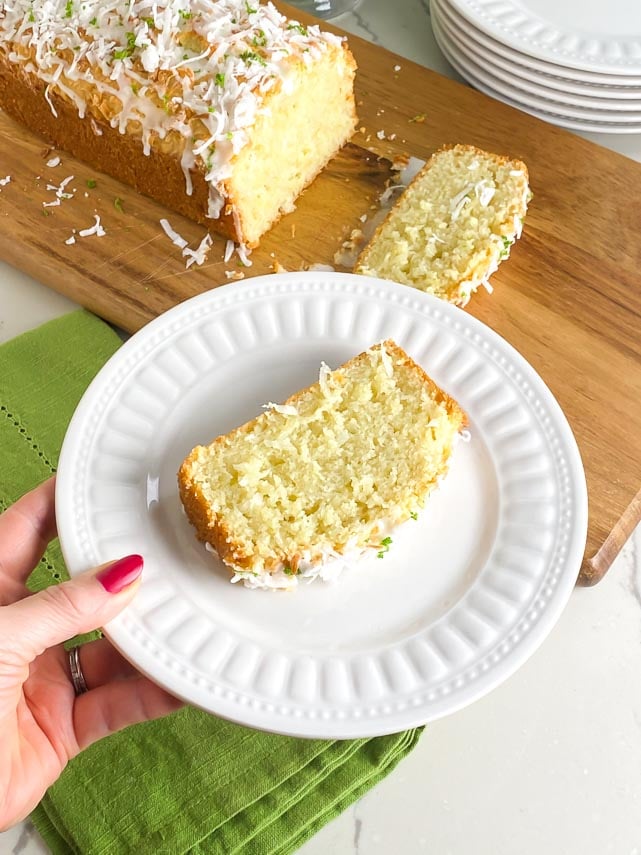
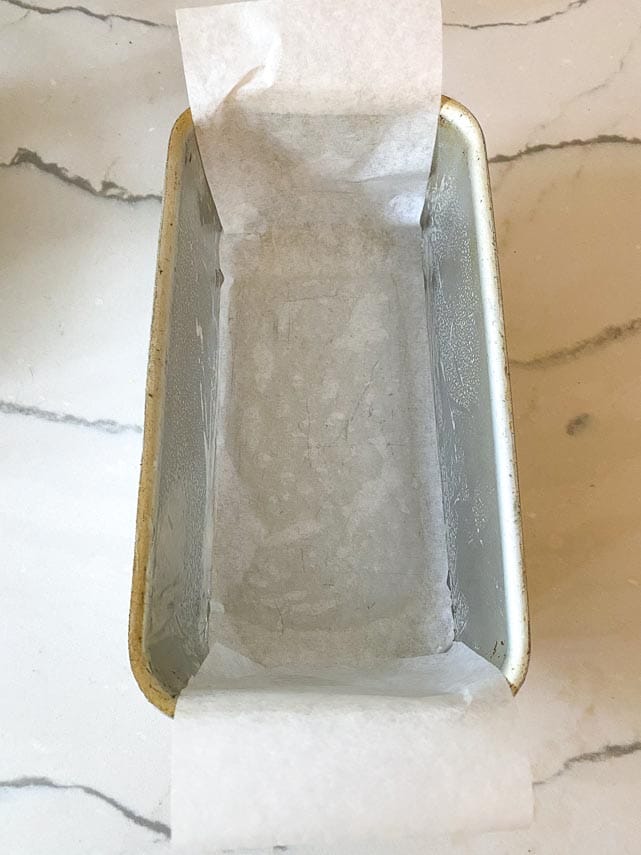
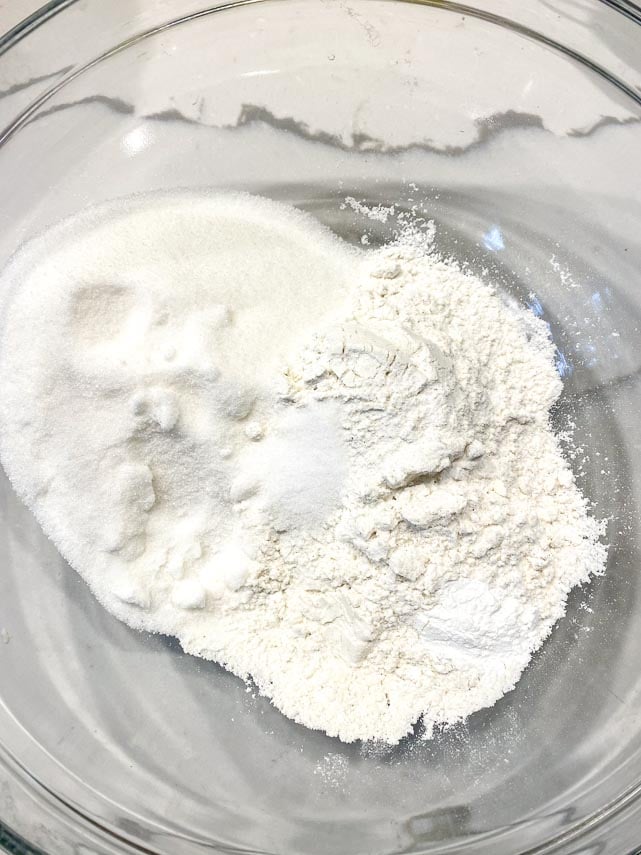
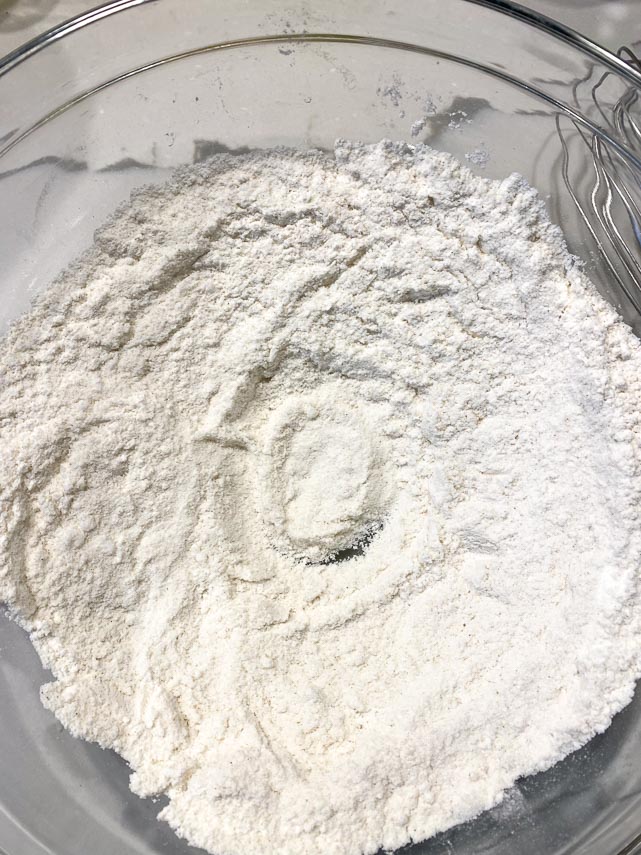
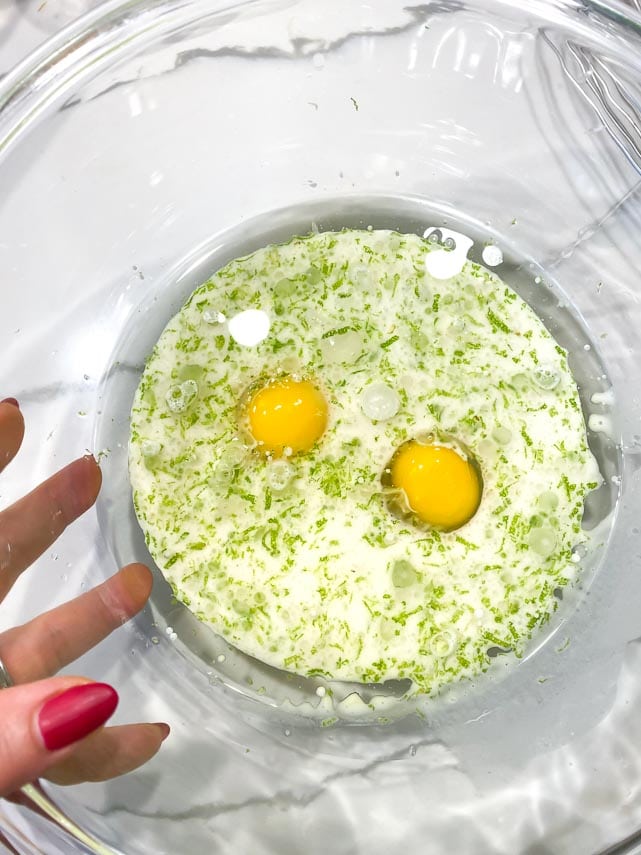
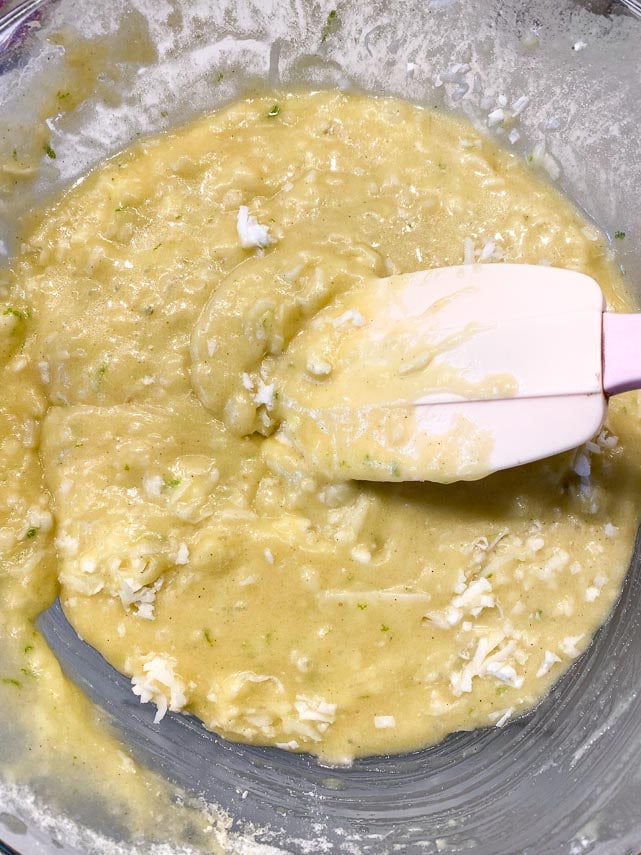
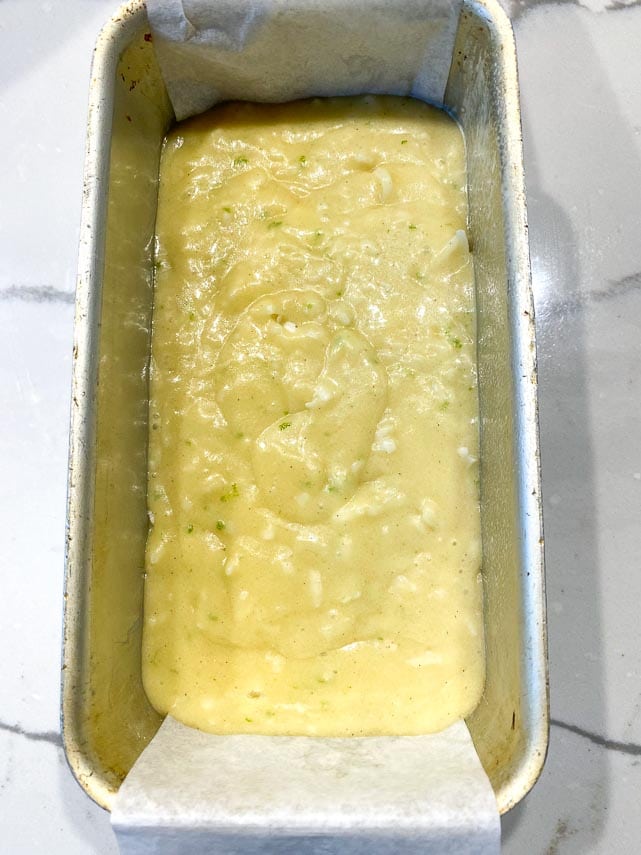
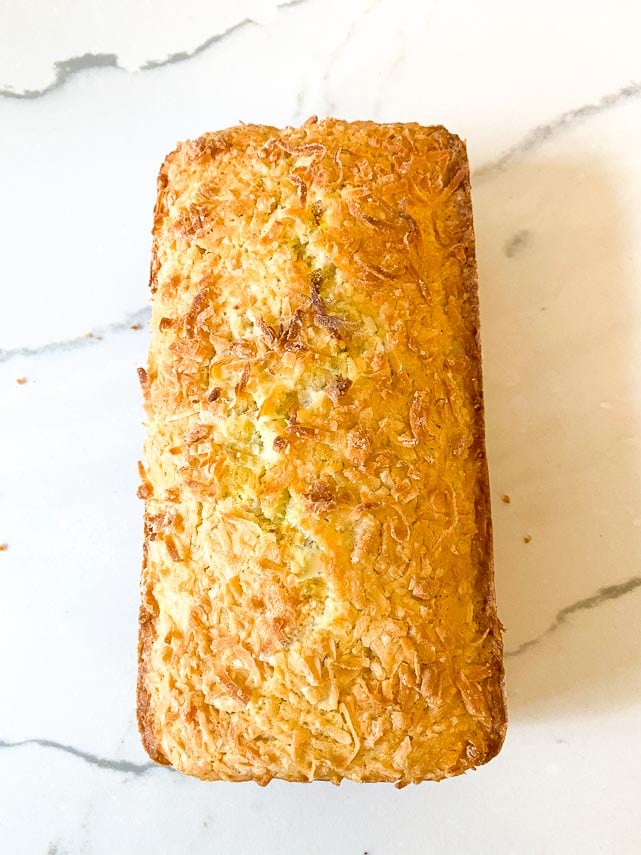
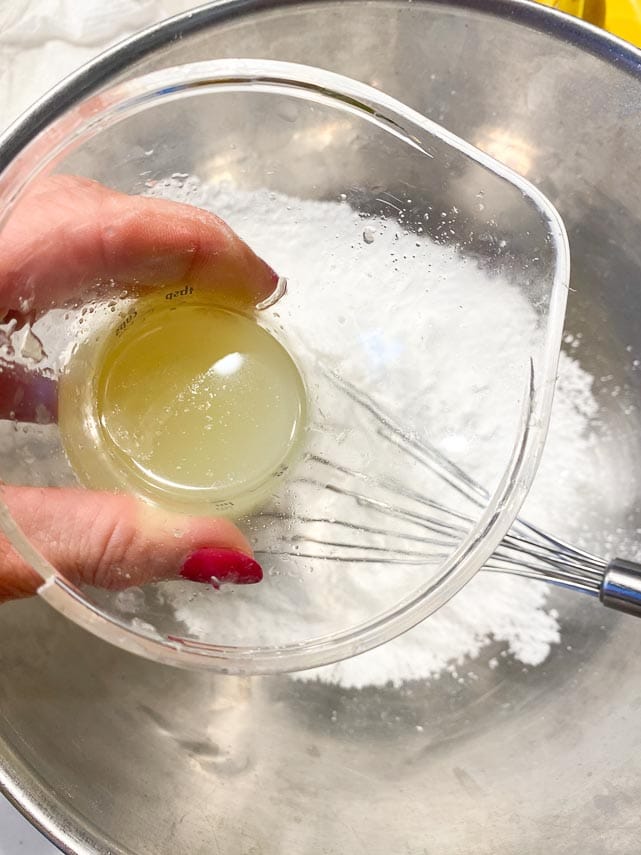
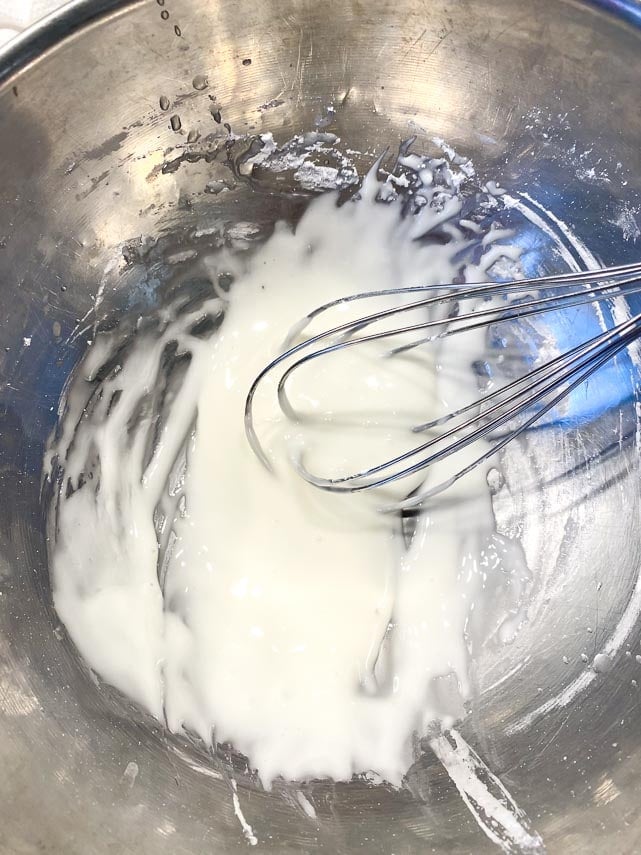
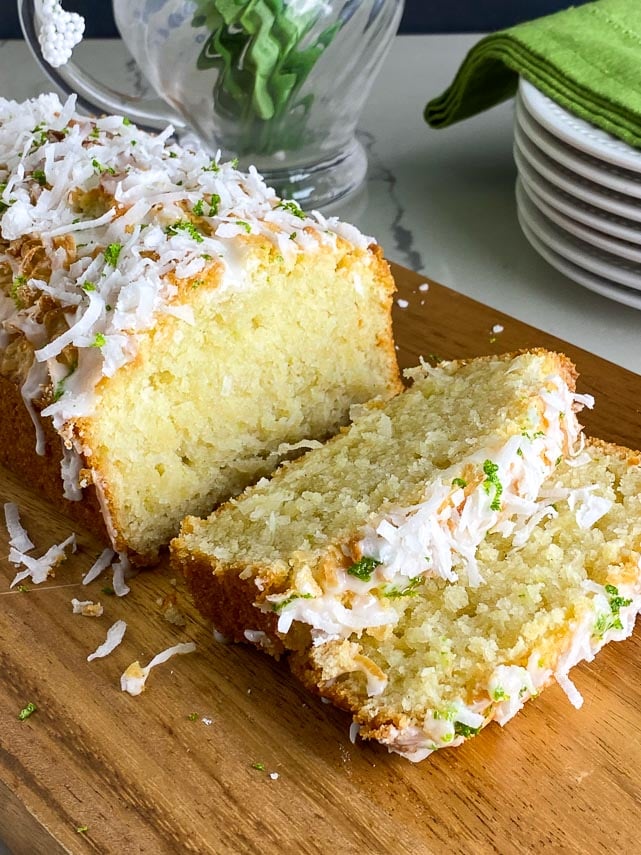
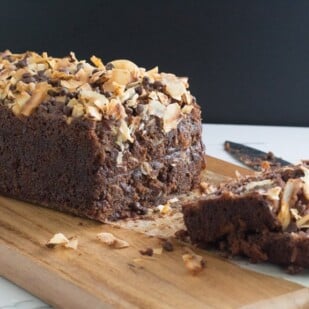
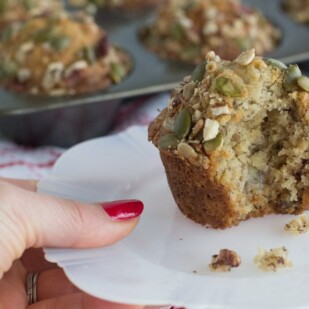




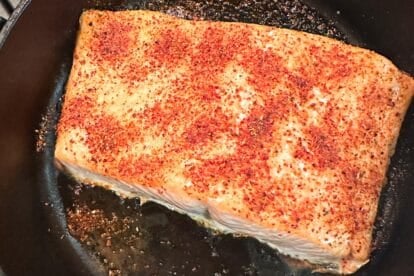
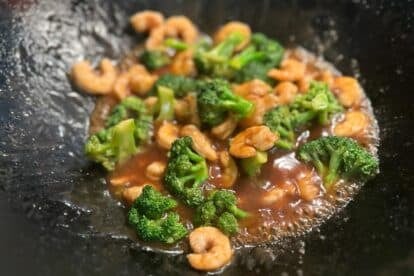
Aloha.. Can dis bread be FROZEN ? i love to bake in batches and would love to make a few loaves at a time and freeze some for later use or wen guest comes over.
Thank you
You could try freezing without a glaze. Double wrap with plastic then slip into a heavy weight zip top bag.
Amazingggggg flavor and recipe was simple to follow!
You have reminded me to make this again! So glad you loved it!
Would one lime be enough for the (1T) quickbread and (2T) glaze? And the (2T + 1T) zest? The one lime we have left is pretty small. Just wondering if I can surprise my DH with this later, or if I need to first wait for grocery day. 🙂
[If I had to, I could probably use Penzey’s lemongrass and lemon peel to supplement, but I’d like to make recipe as stated.]
I have no idea since I can’t see your lime:) You might need another lime, but try with what you have!